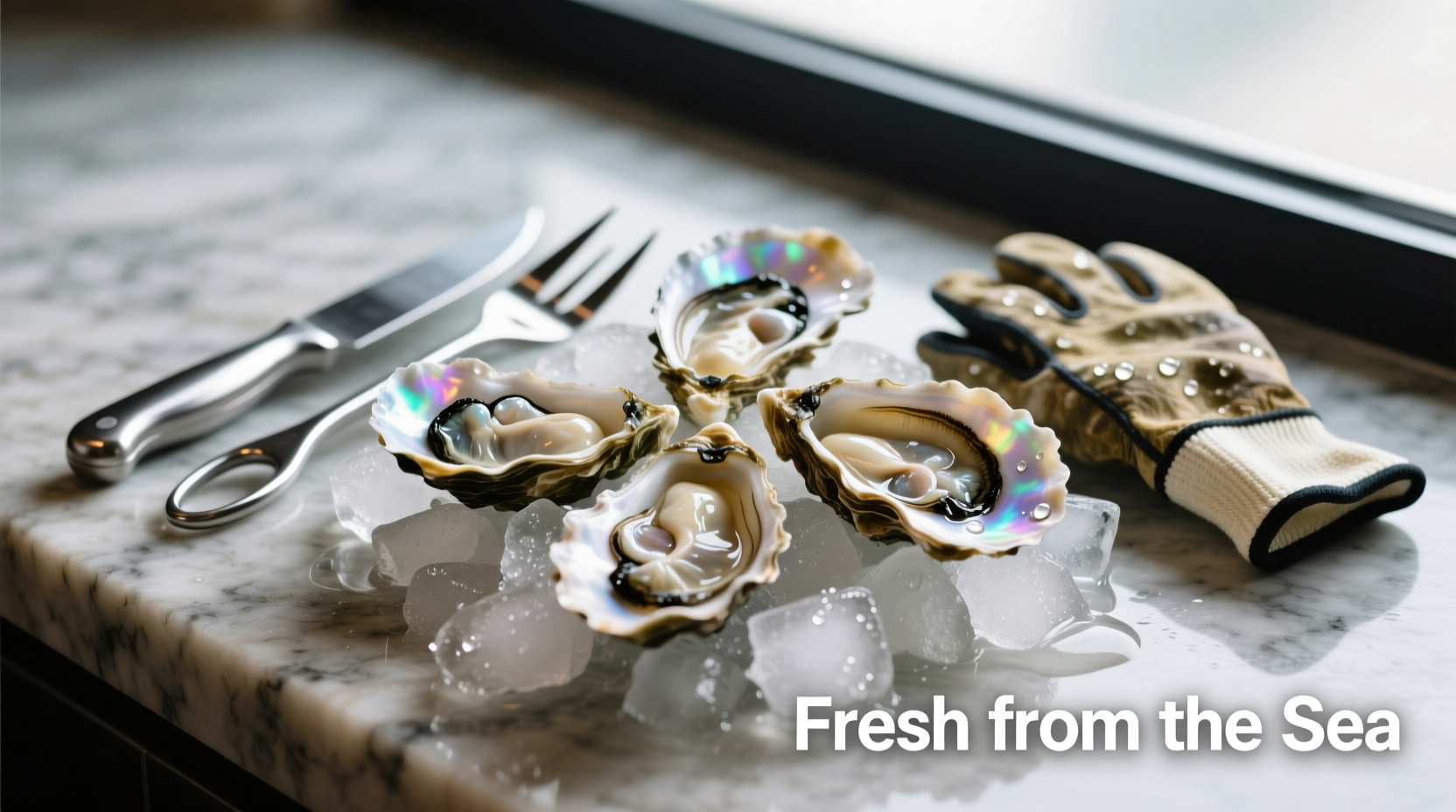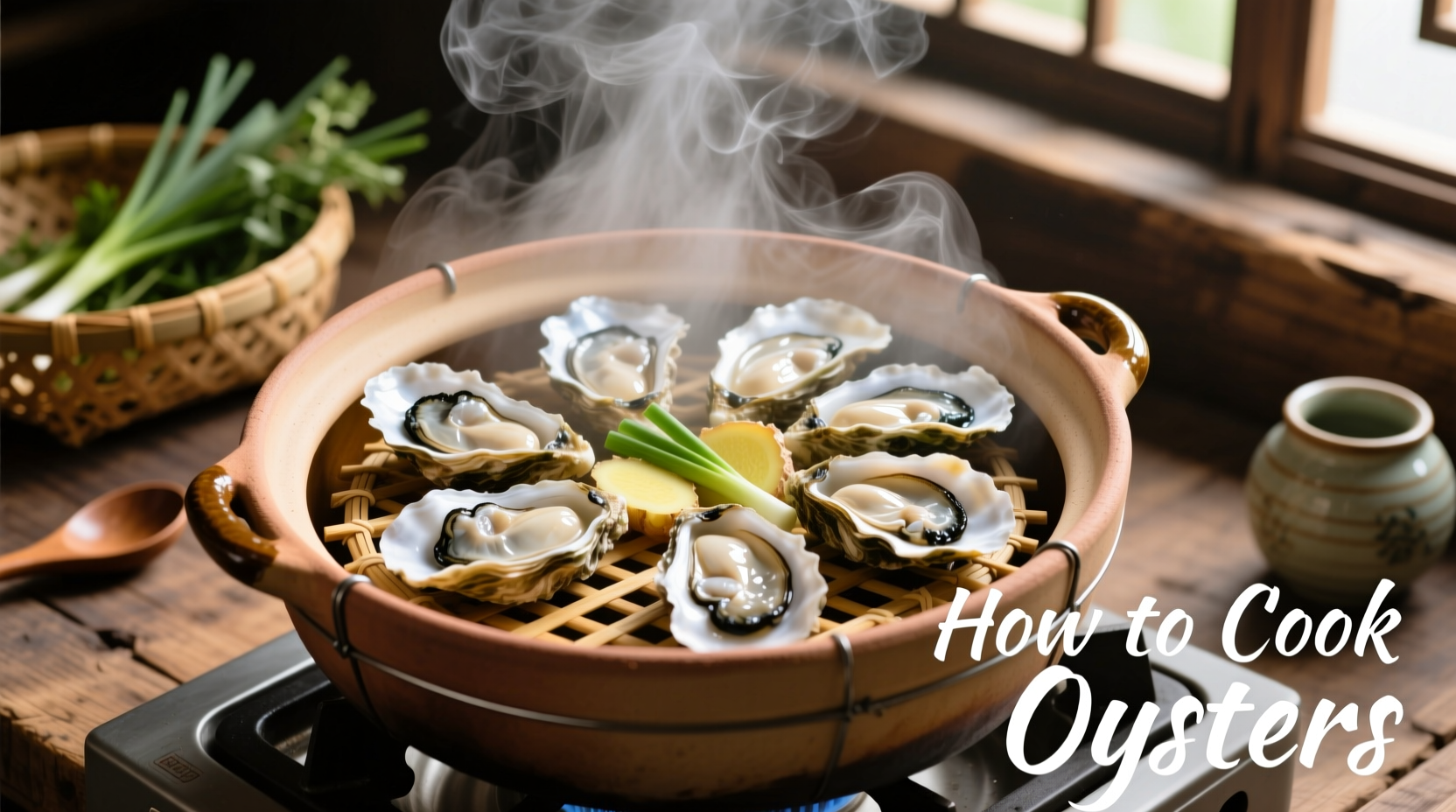Here's the direct answer: To safely cook fresh oysters, first scrub shells clean, then steam them for 5-8 minutes until edges curl and shells pop open, or grill them for 5-7 minutes at 400°F until shells open. Discard any oysters that don't open after cooking. Always handle raw oysters with care using a thick towel and oyster knife for shucking, and ensure cooked oysters reach an internal temperature of 145°F for food safety.
Discover how to transform fresh oysters into a restaurant-quality meal with confidence. Whether you're a seafood novice or experienced home cook, this guide delivers precise timing, temperature guidelines, and safety protocols that prevent common mistakes. You'll learn multiple cooking methods that preserve the delicate briny flavor while ensuring food safety - no more overcooked, rubbery oysters or dangerous handling errors.
Selecting Quality Oysters for Cooking
Choosing fresh oysters is your first critical step toward a successful dish. Live oysters should feel heavy for their size with tightly closed shells or shells that close when tapped. Avoid any with cracked shells or unpleasant odors. When purchasing, look for the harvest tag showing the origin and harvest date - freshness matters most with shellfish.
According to the FDA Food Code, oysters should be stored at 45°F or below and consumed within 7-10 days of harvest. Properly handled oysters maintain their natural liquor (the liquid inside the shell), which is essential for cooking and flavor.
Essential Tools for Oyster Preparation
Before you begin cooking, gather these essential tools:
- Oyster knife with a short, sturdy blade (not a regular kitchen knife)
- Heavy leather or rubber-coated shucking glove
- Thick towel for stabilizing the oyster
- Bowl of ice for holding shucked oysters
- Grill, steamer, or heavy skillet depending on your cooking method
Professional chefs emphasize that using the proper oyster knife prevents dangerous slips. "A dedicated oyster knife's blunt tip and thick handle provide the leverage and safety needed," explains Antonio Rodriguez, who has worked in Michelin-starred seafood restaurants.

Safe Oyster Shucking Technique
Shucking requires care but becomes easy with practice. Place the oyster cup-side down on a towel with the hinge facing you. Insert the knife into the hinge, twist gently to pop the shell, then slide the knife along the top shell to sever the muscle. Never point the knife toward your body.
Food safety experts from FoodSafety.gov warn that improper shucking causes most oyster-related kitchen injuries. Always wear a protective glove and work over a bowl to catch the valuable oyster liquor. Discard any oysters with dry shells or off smells before shucking.
Multiple Cooking Methods Compared
| Cooking Method | Temperature | Time Required | Best For |
|---|---|---|---|
| Steaming | Medium-high heat | 5-8 minutes | Preserving natural flavor |
| Grilling (shells on) | 400°F | 5-7 minutes | Outdoor cooking, smoky flavor |
| Pan-frying | Medium heat | 2-3 minutes per side | Crispy texture lovers |
| Baking | 450°F | 8-10 minutes | Large batches, roasted flavor |
Step-by-Step Cooking Instructions
Steaming Oysters (Best for Beginners)
- Add 1 inch of water or beer to a large pot with a steamer basket
- Bring liquid to a rolling boil
- Place oysters in the basket hinge-end first
- Cover and steam for 5-8 minutes
- Remove when shells pop open (discard any that remain closed)
Grilling Oysters (No Shucking Required)
- Preheat grill to 400°F
- Scrub oysters thoroughly
- Place cup-side down directly on grill grates
- Cook for 5-7 minutes until shells open
- Use tongs to remove and shuck immediately
How to Tell When Oysters Are Perfectly Cooked
Overcooked oysters become tough and rubbery. Watch for these precise indicators:
- Shells pop open naturally (for steamed or grilled)
- Edges of the oyster begin to curl slightly
- Meat turns from translucent to opaque
- Internal temperature reaches 145°F when measured with a food thermometer
According to the USDA FoodData Central, properly cooked oysters maintain their delicate texture while reaching safe internal temperatures. The transformation from raw to cooked happens quickly - check oysters every 30 seconds during the final cooking phase.
Serving Suggestions That Elevate Your Dish
Serve cooked oysters immediately for best texture. Classic accompaniments include:
- Lemon wedges for brightness
- Hot sauce or mignonette sauce (shallots, vinegar, pepper)
- Garlic butter for dipping
- Fresh herbs like parsley or chives
For presentation, return shucked oysters to their bottom shells on a bed of rock salt. This keeps them stable and maintains temperature. "The salt bed isn't just decorative - it prevents oysters from sliding and helps maintain proper serving temperature," notes culinary expert Antonio Rodriguez.
Critical Food Safety Guidelines
Oysters require special safety considerations due to potential bacteria. Follow these essential guidelines:
- Always refrigerate oysters below 40°F until ready to cook
- Discard any oysters with open shells that don't close when tapped
- Never eat oysters that don't open after cooking
- Cook to 145°F internal temperature for safety
- Pregnant women, elderly individuals, and those with compromised immune systems should avoid raw oysters
The CDC warns that raw or undercooked oysters can contain Vibrio bacteria, which causes approximately 80,000 illnesses annually in the United States. Cooking oysters thoroughly eliminates this risk while preserving flavor when done correctly.
Troubleshooting Common Oyster Cooking Problems
Problem: Oysters won't open after cooking
Solution: Discard immediately - this indicates the oyster was dead before cooking and unsafe to eat
Problem: Oysters become tough and rubbery
Solution: Reduce cooking time; oysters continue cooking from residual heat after removal
Problem: Oysters lose all their liquor during cooking
Solution: Ensure shells are properly sealed before cooking; don't overcook











 浙公网安备
33010002000092号
浙公网安备
33010002000092号 浙B2-20120091-4
浙B2-20120091-4